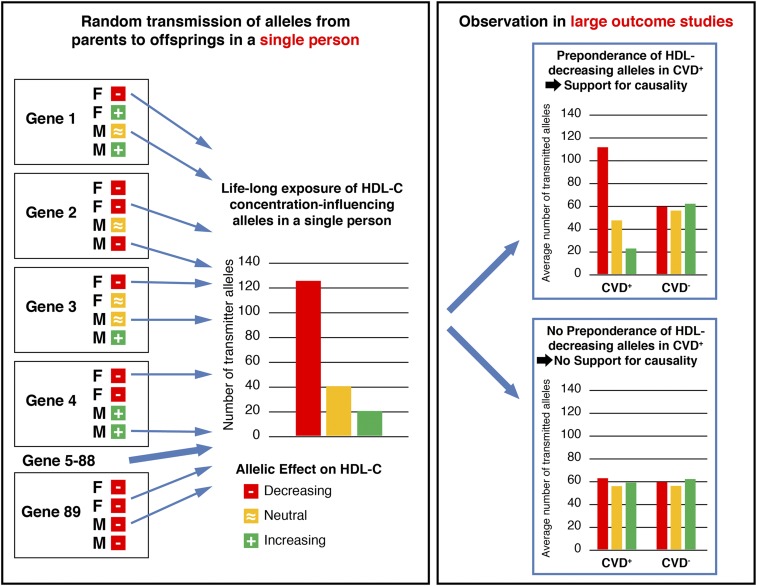Figure 2.
Schematic illustration of a Mendelian randomization approach of HDL-C influencing genetic variants and outcomes of interest. Let us assume there exists a large number of genes that influence HDL-C concentrations (e.g., genes 1–89). For each gene, we know genetic variants that decrease and others that increase HDL-C, and others that are neutral. For each gene, it is determined randomly at the time of conception which of the two alleles from the father (F) and which of the two alleles from the mother (M) are transmitted to the offspring. Because many genes influence HDL-C concentrations, it is finally a question of whether an offspring has a preponderance of HDL-C–lowering alleles to which they are is exposed for their lifetime. If there is a causal effect of HDL-C concentrations on outcomes such as CVD or kidney function, one would expect that there will be also a preponderance of the HDL-C concentration-decreasing alleles in the patient groups with the outcome of interest compared with groups without that outcome. Usually, a large number of patients and controls have to be investigated to get reliable results.

